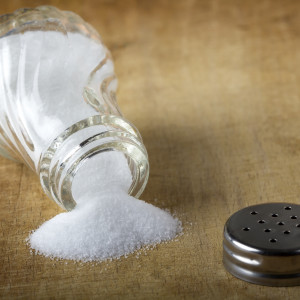In the scientific community, it is a breach of professional ethics to conduct research on people without their informed consent. But not for the federal government, it seems.
This month a Senate panel approved a bipartisan bill to continue a decade-long experiment in the nation’s public schools. The Healthy Hunger-Free Kids Act, which has the laudable goals of providing meals for underprivileged students and fighting childhood obesity, forces schools to adhere to scientifically dubious nutritional guidelines. In particular, the act’s requirement for schools to limit sodium in meals is unproven to improve health, and may actually cause harm.
Humans crave salt because it’s essential for the function of our bodies. But government health agencies have convinced people that we eat far too much of it. Problem is, the science on this issue is not settled. For over three decades, researchers have been engaged in what has been called “one of the longest, most vituperative battles in medicine.”
While the theory of sodium-induced hypertension (chronic high blood pressure) made sense, research is beginning to show that the relationship between blood pressure and salt is complex. It is not as simple as more sodium bad, less sodium good.
A landmark 2013 study commissioned by the Centers for Disease Control and performed by the Institute of Medicine found that reducing sodium intake below 2,300 milligrams a day — the maximum amount recommended by the CDC and other U.S. health agencies — had no benefit, and that going below 1,500 milligrams a day — the limit recommended by the American Heart Association — increased risk of death.
Similarly, two studies published in 2014, one of which looked at urine samples of 101,945 people in 17 countries, and a Danish meta-analysis, found the risk of death was lowest among people with an average sodium consumption level between 3,000 and 6,000 milligrams a day. Guess what? That’s how much sodium about 95 percent of the human population has consistently consumed for at least the last 50 years.
On the question of blood pressure, the research isn’t clear. Multiple studies show a wide variation in reactions to altering sodium in the diet, which suggests other factors might connect sodium to blood pressure. Certainly, for some — people who are deemed “salt-sensitive” — increasing sodium consumption will increase their blood pressure. But for others, it has no effect or can even lower blood pressure — even when increasing sodium levels 12-fold. The cause of this individual variation isn’t known, but theories range from other dietary elements, like potassium intake, which has been shown to lower blood pressure, to genetics and gut microbes.
Targeting these other factors may more effectively lower blood pressure and cardiovascular risk without the unintended consequences of severe sodium restriction. Trials conducted by the National Institutes of health — known as DASH, for Dietary Approaches to Stop Hypertension — found that people who cut out as much as 1,000 milligrams of sodium a day saw only a one- or two-point drop in blood pressure, while simply switching to a diet higher in fruits and vegetables reduced it by three to six points.
You might think the government would let up on efforts to get Americans to halve our salt consumption, in light of this research, but no. The school lunch program is just one more tactic to cajole us into following Washington’s one-size-fits-all guidelines.
Without the sodium restriction, the school lunch program might have had some positive effect on childhood obesity. Schools in the program are serving “healthier” foods, according to the CDC. But kids are also throwing away 56 percent more food, according to researchers at the University of Vermont.
Serving more fruits and veggies doesn’t mean kids are eating more of them. As a result, the program seems to have had no effect on obesity rates. Rates fell in some age brackets and rose in others, but the shifts merely continue trends already under way. Had lunch workers been able to add salt (or butter or cheese) to vegetable dishes, they may have ended up in kids’ stomachs instead of the trash bin.
A major problem for advocates of sodium restriction is that humans are unconsciously driven to consume a certain amount of salt. If kids aren’t getting the desired level of sodium in their school meals, they are likely seek it out in other foods, either at home or in vending machines, and may actually end up eating more caloriesin an attempt to satisfy their body’s salt appetite.
It’s time to end this ill-conceived government experiment. The bipartisan bill that funds the Healthy Hunger-Free Kids Act for an additional five years delays implementation of the sodium restriction until 2019. Until then, Congress should consider how kids in the real world respond to the program’s restrictions, both in and out of school.
At the very least, lawmakers should ditch the program’s scientifically questionable salt restriction and give parents the opportunity to opt out of the experiment.

